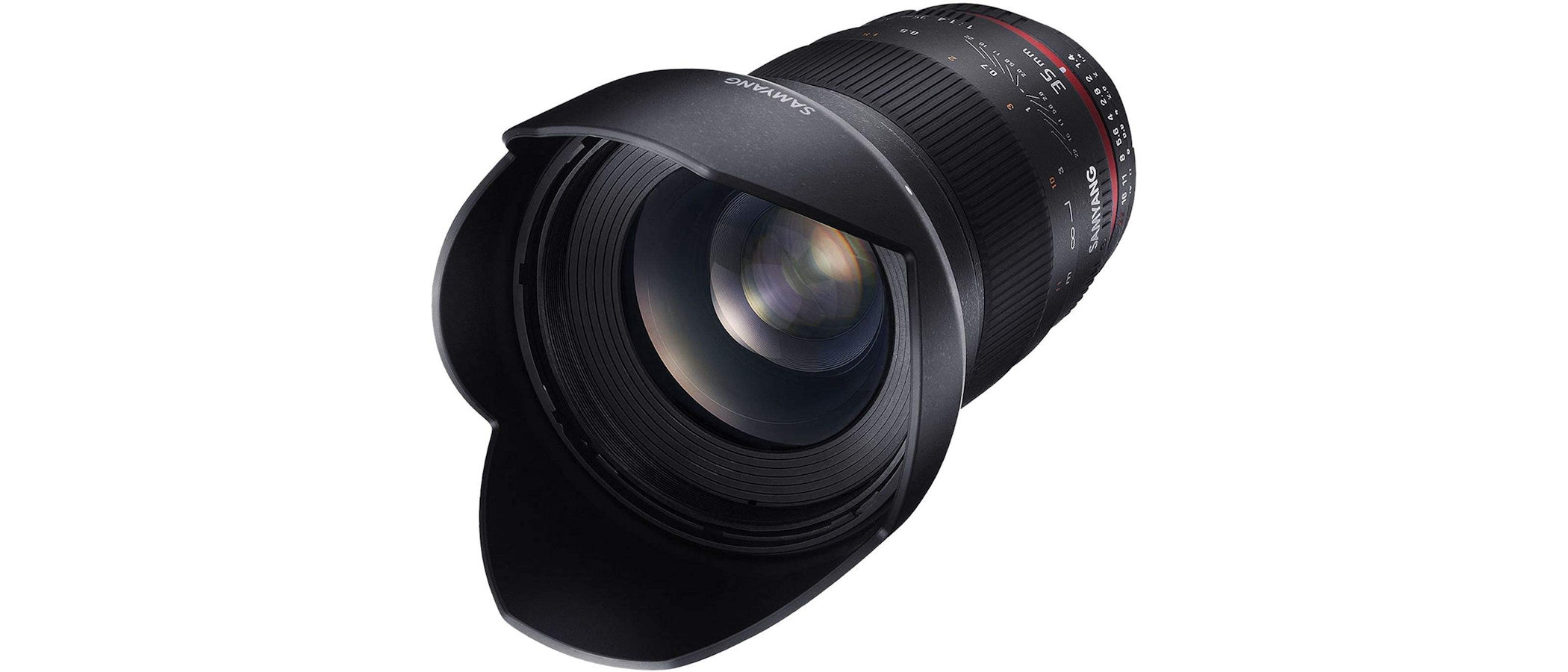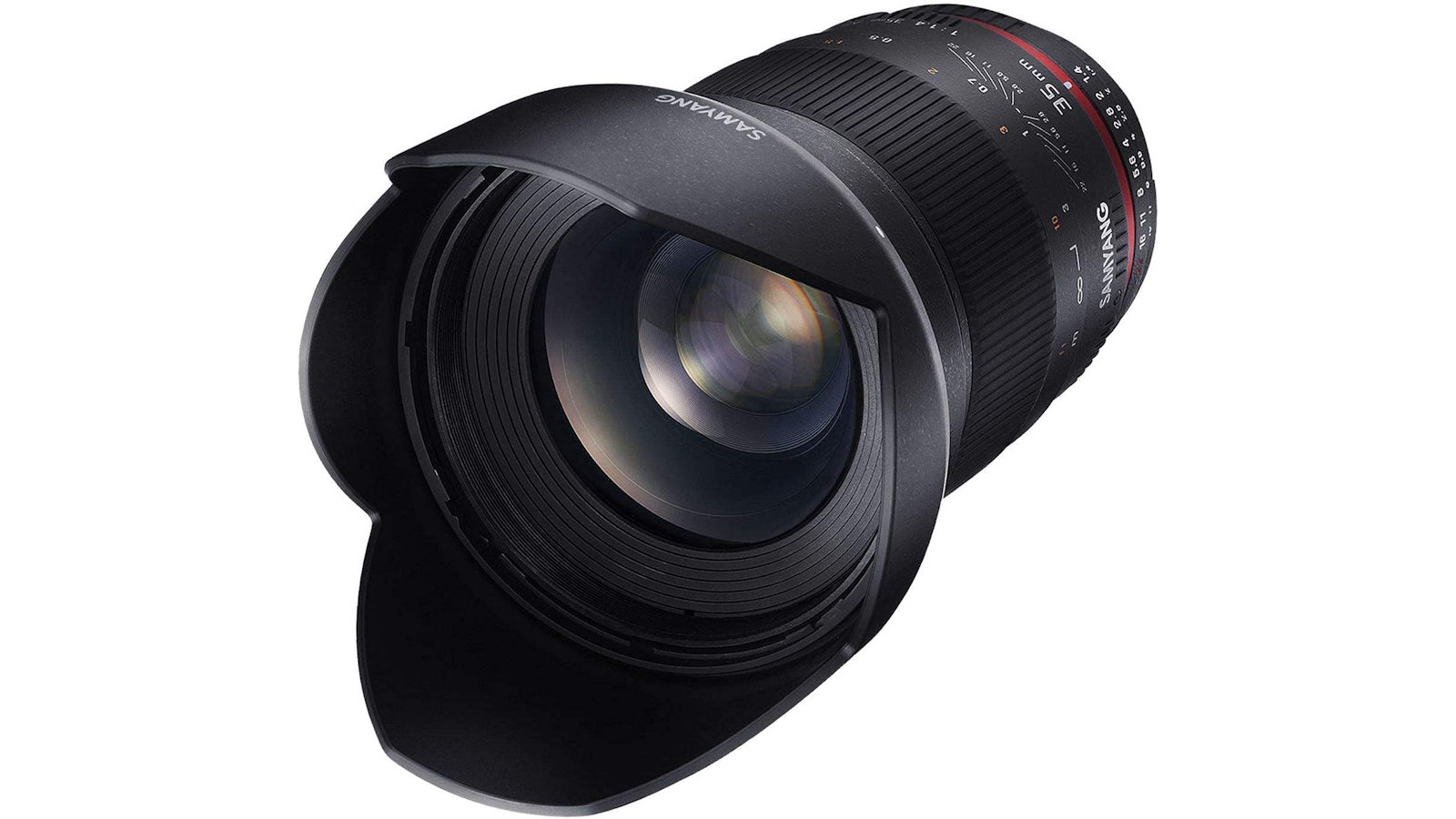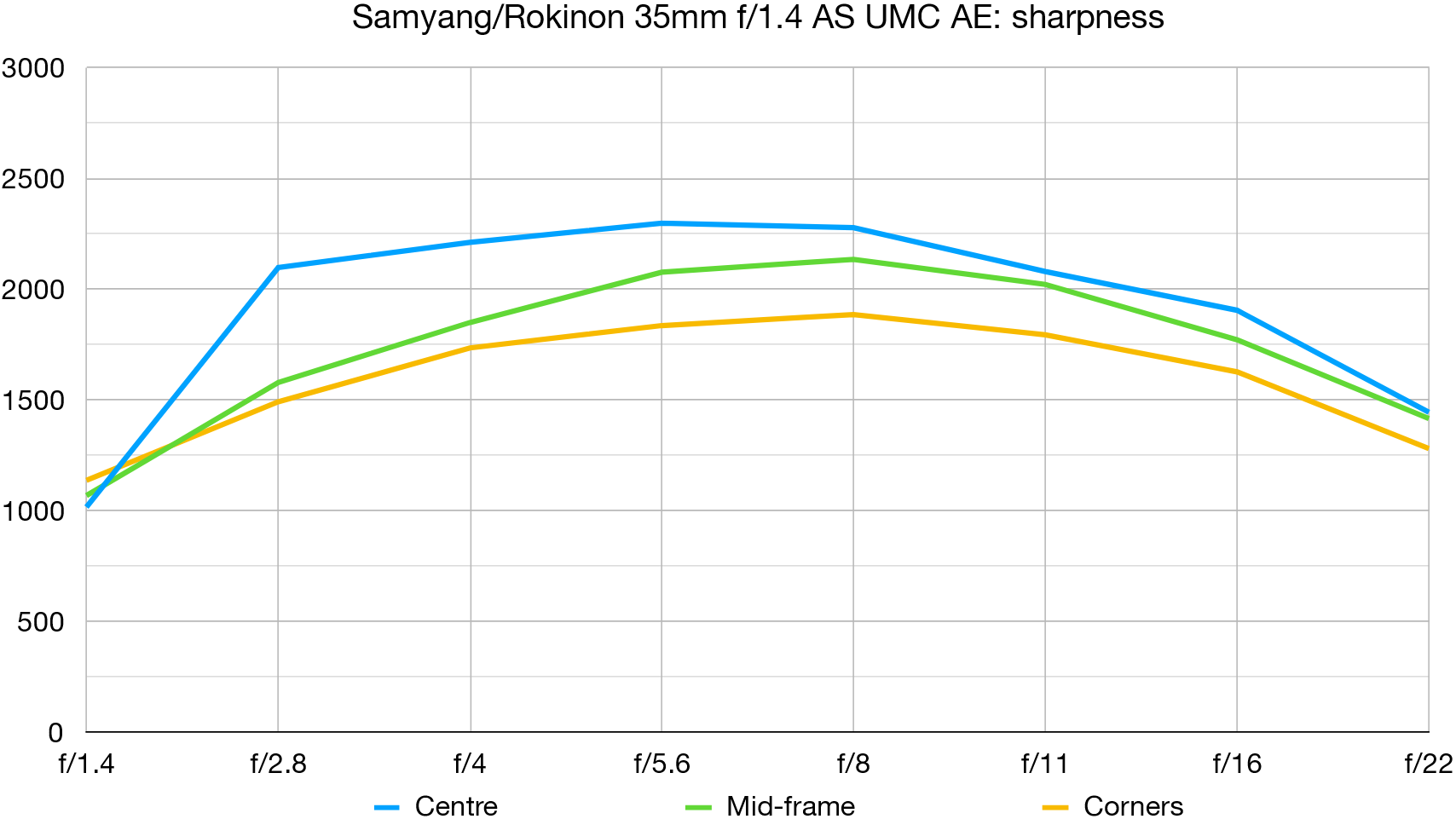Digital Camera World Verdict
With a solid construction and refined handling, this full-frame compatible manual-focus lens combines a classic 35mm focal length with a fast f/1.4 aperture. Overall performance and image quality are impressive, although sharpness drops off noticeably at the widest aperture. It’s available in a typically wide variety of mount options for a Samyang manual-focus lens, although the Canon EF and Nikon F mount editions are the only ones to feature any electronics for communication with the camera body.
Pros
- +
Classic field of view on full-frame cameras
- +
Smooth and precise manual focusing
- +
Very sharp at most apertures
Cons
- -
No electronics in most mount options
- -
Lacks autofocus
- -
Not weather-sealed
Why you can trust Digital Camera World
Very similar to the Samyang/Rokinon 24mm from the same stable, the 35mm f/1.4 AS UMC offers a classic field of view that’s often the top choice for street photography. Moreover, manual focusing with a depth of field scale that enables zone focusing is also often preferred, as it enables you to set up the focus distance in advance and shoot from the hip, instantly reacting to situations as they unfold. However, the Canon EF and Nikon F mount versions with an ‘AE’ suffix have more to offer than the editions for other cameras.
Specifications
Mount: Canon EF/EF-M, Fuji X, MFT, Nikon F, Pentax K, Samsung NX, Sony A/E
Full-frame: Yes
Autofocus: No
Stabilization: No
Lens construction: 12 elements in 10 groups
Angle of view: 63.1 degrees (full-frame)
Diaphragm blades: 8
Minimum aperture: f/22
Minimum focusing distance: 0.3m
Maximum magnification ratio: Unspecified
Filter size: 77mm
Dimensions: 83x109-138mm (mount dependent)
Weight: 690-780g (mount dependent)
Key features
Although it might sound counter-intuitive, one of the key features of this lens is that it’s a manual-focus optic. This is often favored for street photography, and the Samyang’s manual focusing facility is well implemented. There’s a long rotational travel in the focus rings, and a pleasant fluid feel to the movement, enabling smooth and precise focusing. There’s also a focus distance scale with depth of field markings for apertures of f/2.8, f/5.6, f/11, f/16 and f/22, which are great for zone focusing, so you can set the nearest and furthest parts in a scene which will be rendered sharply.
Enabling enhanced focusing accuracy, the Canon EF and Nikon F mount version of the lens features built-in electronics that activate the focus assist and confirmation lamps in the viewfinder. But that’s not all. The other mount options of the lens require you to set the aperture manually, using the aperture ring on the lens body. With no communication to the camera, the aperture can’t be displayed in the camera’s viewfinder or LCD, and you can’t set the aperture from the camera. The ‘AE’ (Auto Exposure) edition of the lens for Canon and Nikon enables camera-based aperture control, as well as use of the lens in all PASM shooting modes. Lens-based EXIF data is also saved in images.
The optical path includes one aspherical element and two HR (High Refractive index) elements to boost sharpness and reduce distortion and color aberration. Samyang’s Ultra Multi Coating is also applied to enhance contrast and color accuracy, as well as to minimize ghosting and flare.
Performance
Sharpness and contrast are disappointing at very wide apertures but are much improved from f/2.8 all the way through to f/22. Color fringing is fairly minimal, even at the extreme corners of the frame but, while barrel distortion is quite well controlled, it’s technically a little worse than from many 35mm lenses.
Lab results
We run a range of lab tests under controlled conditions, using the Imatest Master testing suite. Photos of test charts are taken across the range of apertures and zooms (where available), then analyzed for sharpness, distortion and chromatic aberrations.
We use Imatest SFR (spatial frequency response) charts and analysis software to plot lens resolution at the center of the image frame, corners and mid-point distances, across the range of aperture settings and, with zoom lenses, at four different focal lengths. The tests also measure distortion and color fringing (chromatic aberration).
Sharpness:
Levels of sharpness are very impressive at apertures from f/2.8 all the way through to f/16, and remain very good at the narrowest aperture of f/22. However, the lens is lacking in sharpness when shooting wide-open at f/1.4.
Fringing:
Color fringing is quite negligible throughout the whole aperture range, right out to the extreme edges and corners of the image frame.
The best camera deals, reviews, product advice, and unmissable photography news, direct to your inbox!
Distortion: -1.91
Barrel distortion is a little more noticeable than with many 35mm lenses on full-frame cameras but still quite minimal and further reduced when using the lens on a crop-sensor camera.
Verdict
With a solid construction and refined handling, this full-frame compatible manual-focus lens combines a classic 35mm focal length with a fast f/1.4 aperture. Overall performance and image quality are impressive, although sharpness drops off noticeably at the widest aperture. It’s available in a typically wide variety of mount options for a Samyang manual-focus lens, although the Canon EF and Nikon F mount editions are the only ones to feature any electronics for communication with the camera body.
Read more:
• Best camera lenses to get
• Best Canon lenses
• Best Nikon lenses
• Best Sony lenses
Matthew Richards is a photographer and journalist who has spent years using and reviewing all manner of photo gear. He is Digital Camera World's principal lens reviewer – and has tested more primes and zooms than most people have had hot dinners!
His expertise with equipment doesn’t end there, though. He is also an encyclopedia when it comes to all manner of cameras, camera holsters and bags, flashguns, tripods and heads, printers, papers and inks, and just about anything imaging-related.
In an earlier life he was a broadcast engineer at the BBC, as well as a former editor of PC Guide.





